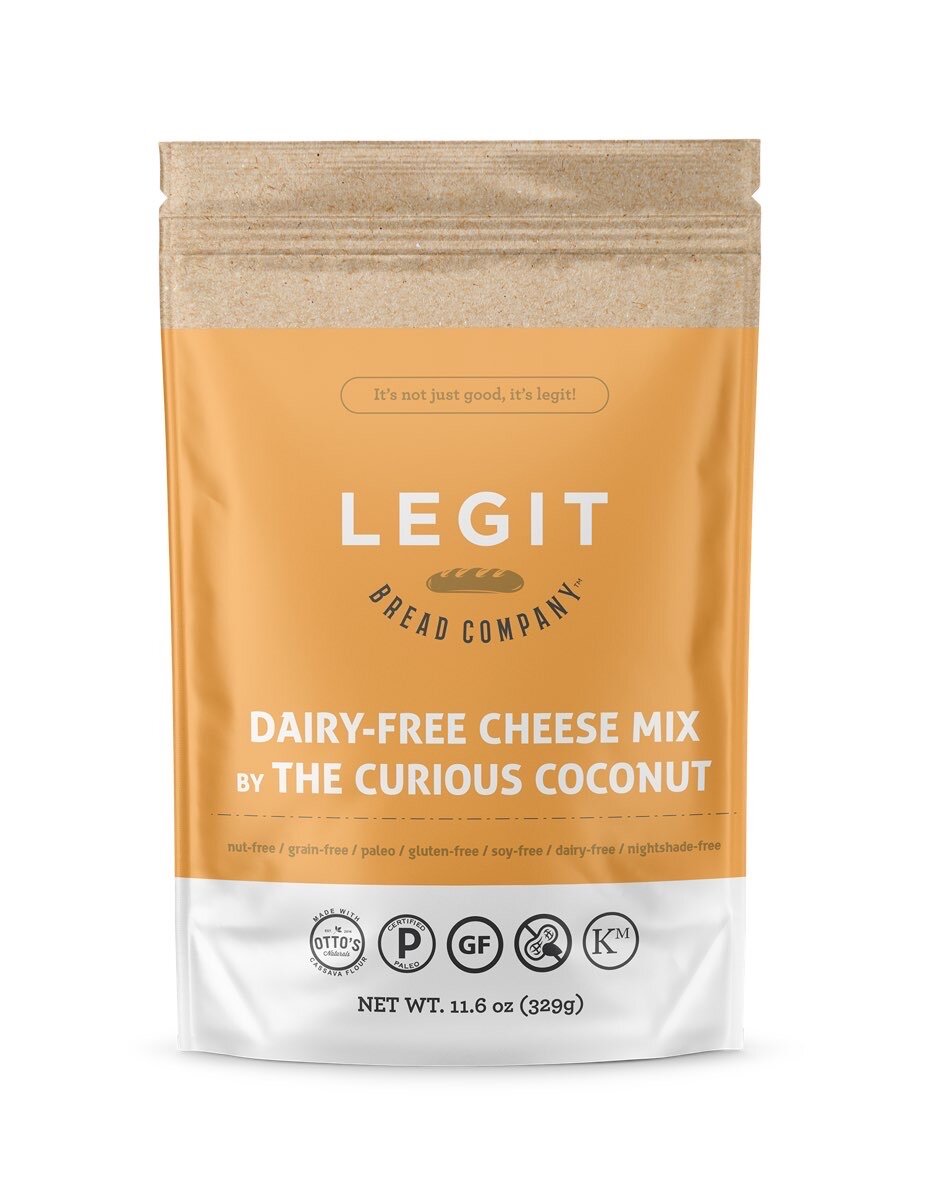This is a partnered conversation. All opinions are my own.
If you are not from the South you are probably scratching your head about "cat head" biscuits. I want to tell you a funny story.
I grew up, like most southerners, learning to call drop biscuits "cat head" biscuits. Drop biscuits are the easier, more laid back way to make biscuits because instead of rolling out the dough and cutting out discs for perfectly shaped biscuits, you mix up the batter (usually without measuring exactly!) and then use a spoon to drop it on the baking sheet.
The result is an uneven outer surface with little peaks all over the biscuit. Now, I am a bit of a crazy cat lady. I have always loved cats. So, literally well into adulthood I believed that the reason they are called cat head biscuits is because they have a "fuzzy" or "furry" exterior from all the little peaks and spikes from just plopping the dough down.
My cat-obsessed brain thought that they are called cat head biscuits because they look like a cat head. Because, "fuzzy" = fur? Or something like that.
Turns out they are called that because they tend to be as big as a cat's head. They are jumbo biscuits.
I can't be the only person who has ever thought it was because they are kinda furry looking, like a cat. Can I??!
I digress. Back to these incredible biscuits. They are made with an amazing flour: plantain.
O, plantain, how I love thee! It seriously is my favorite Paleo flour to work with. I used to cook with it all the time when I lived in Miami Beach, because the little grocery store down the street carried it. But sadly, when I moved away, I could not find a reliable source.
So when I met Tara from POW! Superfoods and learned she was carrying plantain flour I just about lost my mind I was so excited.
Cooking with Plantain Flour
Plantain flour generally works as a 1:1 replacement for coconut flour. This is EXCELLENT news for those who are (sadly) sensitive to coconut products. And it means that you technically should be able to swap coconut flour out in this recipe if you like (but I have not tried it so can't guarantee good results). And regarding coconut sensitivity, if you suffer from a chronic recurring virus you may want to think about doing a coconut exclusion trial. More info on that here.
And if you want to make an old favorite white flour recipe Paleo or AIP, you are in luck because for every cup of white flour called for you only need to replace it with half a cup of plantain flour. Again, this is a general rule and some recipes may require slight tweaking.
Plantain vs Cassava
So, cassava flour has been the darling of the AIP baking world for a while now -- and for good reason! The only problem, though, is that once we all started baking with it, a LOT of people realized that even though it is technically an approved flour, it can cause some serious issues for some folks. (Yet another reason why I disagree with some of the foods on the AIP lists and instead think The Loving Diet approach is much better, but that's a topic for another post!)
I see plantain flour moving WAY up in the Paleo and AIP baking scene now that POW! Superfoods is available. And I really think that plantain flour may be a great flour for those who have found themselves to be sensitive to cassava flour and tapioca starch. If not, then malanga flour may be the truly perfect flour since it is one of the most hypoallergenic foods on the planet (available soon from POW!).
Both flours have their own unique taste and properties and they can't be subbed 1 for 1 - you must add starch to plantain flour to be able to sub it in most cassava flour recipes. Cassava also has a natural elasticity to it that plantain lacks, which makes plantain-based baked goods softer and crumblier. They are both great flours and I enjoy cooking with both of them!
Also, if you are looking for a cassava-based biscuit, I already have you covered right here --> Buttermilk Biscuits (AIP, dairy-free)
Plantain Flour Nutrition
Plantain flour is an excellent source of resistant starch. If you are like "what the heck is that?" let me briefly explain. Our beneficial gut bacteria need to eat, too, and they like to eat a type of starch known as "resistant" - which gets its name because it resists digestion higher up in the digestive tract.
Feeding your good bacteria with resistant starches has been linked to lowered inflammation, improved digestion, enhanced insulin sensitivity, more stable blood sugar levels, and may help make losing weight easier (source, with links to the literature).
But, to get the benefits of resistant starch it must be consumed raw (so these biscuits don't count!) because cooking changes the structure of the starches and converts them from resistant to non-resistant. Luckily though you can just add a spoonful of plantain flour to your smoothie to easily get a dose of resistant starch! More info on resistant starch levels in food here.
Plantains are a type of banana, and they are similar nutritionally but there are some key differences. Plantains are actually a much better source of potassium than bananas - interesting, right?
Here is a peek at the nutrition in one medium green plantain (which makes about 2-3 TB of plantain flour).
The same amount of banana has 805mg of potassium compared to plantain's 1037mg. Told ya!
POW! Superfoods Plantain Flour GIVEAWAY!
Just use this widget to enter - 3 lucky winners each will win one bag of plantain flour!
No purchase necessary and you must be 18 or older and live in the U.S. to enter. Good luck!
INSTAGRAM GIVEAWAY!
Hop on over to Instagram to enter the flash giveaway going on over there, too!!! So many chances to win :-D Just click the pic below and it will open up the post where you can comment to enter.
AIP Cat Head Biscuits (aka Southern Style Drop Biscuits - AIP, Paleo)
Published 06/27/2016
Cat head biscuits are a Southern staple, and now you can enjoy them again thanks to the magic of plantain flour!
Ingredients
- 180 grams plantain flour (1.5 cups of SIFTED, scooped, and leveled flour)
- 3/4 tsp unrefined finely ground salt
- 1 tsp cream of tartar
- 1/2 tsp baking soda
- 2 TB gelatin (Vital Proteins is grass-fed and my favorite brand!)
- 90 g (about 6 TB) lard (can substitute palm shortening - this is a sustainable, orangutan-safe brand)
- 177 grams water (3/4 cup)
Instructions
- Preheat oven to 400F
- Add dry ingredients (including gelatin) to a mixing bowl and stir to combine. (Sometimes it is necessary to make a "gelatin egg" but in this case simply mix the gelatin in with the other dry ingredients)
- Cut lard into the dry ingredients using a dough blender or sturdy fork for about a minute. The dough will look like a crumble when you are done.
- Add water to dough and stir it with a large spoon. Mix well until a batter forms.
- On a parchment paper lined baking sheet, use spoon to drop the batter into 6 segments. It is a somewhat stiff batter and the outside will be irregularly shaped. That's the point!
- Bake 15-20 minutes until the tops are slightly browned.
- Allow to cool about 5-10 minutes before serving. Enjoy as is or cut in half to fill with your favorite breakfast protein, jelly or preserves, or butter/dairy-free Paleo butter substitute (like this one.
- Store in the fridge up to 3 days. Freezes well. In either case, reheat in a 350F oven until warmed through.
Cook time: 00 hrs. 20 mins.
Total time: 30 mins.
Recommended Ingredients
These are affiliate links to the exact products I use in my own kitchen. I only endorse products I honestly love!























This gluten- and dairy-free green bean casserole is just as quick and easy to make as the original, but without the allergens and additives.